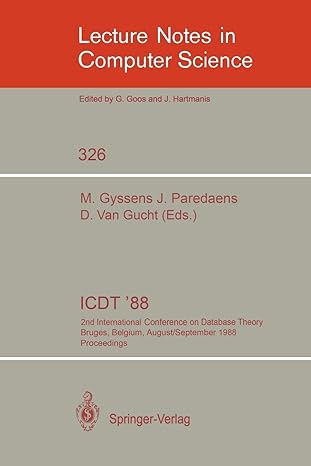Question
Could someone please help me to understand this question about open addressing? Open addressing insertion is like an unsuccessful search, as you need to find
Could someone please help me to understand this question about open addressing? Open addressing insertion is like an unsuccessful search, as you need to find an empty cell, i.e., to not find the key you are looking for! If the open addressing hash functions above were uniform hashing, what is the expected number of probes at the time that the last key (10) was inserted? Use the theorem for unsuccessful search in open addressing and show your work. Answer with a specific number, not O or Theta. I'm not sure if this is helpful, but this is another portion of the problem: Show the table that results when 9, 32, 1, 66, 40, 20, 51, 10 are cumulatively inserted in that order into an initially empty hash table of size m = 11 Could you please explain with steps as well? Thanks!
Step by Step Solution
There are 3 Steps involved in it
Step: 1

Get Instant Access to Expert-Tailored Solutions
See step-by-step solutions with expert insights and AI powered tools for academic success
Step: 2

Step: 3

Ace Your Homework with AI
Get the answers you need in no time with our AI-driven, step-by-step assistance
Get Started


